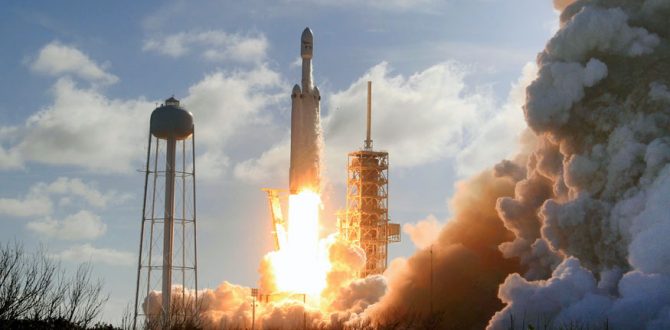Also Read: Chandrayaan-2 to Cost Rs 800 Crore: ISRO Chairman
NASA’s latest astrophysics satellite, meanwhile, soared on toward orbit, starting the clock on a two-year, $337 million quest to expand astronomers’ known catalogue of so-called exoplanets, worlds circling distant stars. Wednesday’s blastoff was a milestone of sorts for Space Exploration Technologies, or SpaceX, the private launch service owned by billionaire entrepreneur Elon Musk. The California-based company has launched cargo missions and other payloads for NASA before. But TESS marks the first under a special certification SpaceX has obtained to carry one of NASA’s highest-priority science instruments.
TESS is designed to build on the work of its predecessor, the Kepler space telescope, which discovered the bulk of some 3,700 exoplanets documented during the past 20 years and is running out of fuel. NASA expects to pinpoint thousands more previously unknown worlds, perhaps hundreds of them Earth-sized or “super-Earth” sized – no larger than twice as big as our home planet. Those are believed the most likely to feature rocky surfaces or oceans and are thus considered the best candidates for life to evolve. Scientists said they hope TESS will ultimately help catalogue at least 100 more rocky exoplanets for further study in what has become one of astronomy’s newest fields of exploration.
Also Read: Facebook Wearable Device Helps ‘Feel’ Words on Your Arm
“TESS is going to dramatically increase the number of planets that we have to study,” TESS principal investigator George Ricker of the Massachusetts Institute of Technology told reporters in a pre-launch briefing on Sunday. Roughly the size of a refrigerator with solar-panel wings and four special cameras, TESS will take about 60 days to reach a highly elliptical orbit between Earth and the moon to begin its observations.
Like Kepler, TESS will use a detection method called transit photometry, which looks for periodic, repetitive dips in the visible light of stars caused by planets passing, or transiting, in front of them. TESS will focus on 200,000 pre-selected stars that are relatively nearby and among the brightest as seen from Earth, making them better-suited for sensitive follow-up analysis.
The telescope will concentrate on stars called red dwarfs, smaller, cooler and longer-lived than our sun. Red dwarfs also have a high propensity for Earth-sized, presumably rocky planets, making them potentially fertile ground for further scrutiny.
Also Watch: Xolo Era 3X Review: Ease-of-Use is The Biggest USP
Also Watch
-
 Review: Ducati 959 Panigale
Review: Ducati 959 Panigale
-
 Sunday 22 April , 2018
Sunday 22 April , 2018
World Earth Day: Juhi Chawla Talks Environment, Advocates ‘No Plastic’ Policy
-
 Friday 20 April , 2018
Friday 20 April , 2018
Is Your MP/ MLA Accused of Crime Against Women?
-
 Wednesday 18 April , 2018
Wednesday 18 April , 2018
Karnataka Election 2018: The Good, The Bad and The Tainted Candidates
-
 Friday 20 April , 2018
Friday 20 April , 2018
Watch: Quin Smart Helmets | Feature


World Earth Day: Juhi Chawla Talks Environment, Advocates ‘No Plastic’ Policy

Is Your MP/ MLA Accused of Crime Against Women?

Karnataka Election 2018: The Good, The Bad and The Tainted Candidates

Watch: Quin Smart Helmets | Feature






